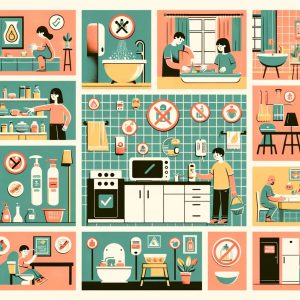PERSONAL PROTECTIVE EQUIPMENT AT WORK
Fatalities and injuries among the nation’s workers are substantially reduced with the use of personal protective equipment (PPE) and technologies.
It is estimated that 20 million workers use PPE on a regular basis to protect them from job hazards. PPE protects workers from death and disabling injuries and illnesses as well as protecting from the specific threats of exposures to certain airborne biological particles, chemical agents, splashes, noise exposures, fall hazards, head hazards, and fires. Improvements and changes in the personal protective technologies are realized in the form of standards and regulations, revisions and alterations to existing standards, subsequent availability of PPE complying with the standards and regulations, and demonstrations of PPE use by the workers.
PPE types: Respirators, Protective Clothing and Ensembles, Noise and Hearing Loss Prevention, Eye Safety, Engineering Controls.
Respirators
Respirators protect the user in two basic ways. The first is by the removal of contaminants from the air. Respirators of this type include particulate respirators, which filter out airborne particles; and «gas masks” which filter out chemicals and gases. Other respirators protect by supplying clean respirable air from another source. Respirators that fall into this category include airline respirators, which use compressed air from a remote source; and self-contained breathing apparatus, which include their own air supply. Respirators should only be used when engineering control systems are not feasible. Engineering control systems, such as adequate ventilation or scrubbing of contaminants are the preferred control methods for reducing worker exposures.
Clothing and Ensembles
Protective Clothing and Ensembles Program is aimed at protecting the skin from various health hazards that may be encountered in the workplace or during a terrorist attack. The program has evolved over the years to incorporate a broad range of studies of how chemicals seep through barrier materials, leak through small holes, or change the barrier material to reduce its protection. In addition to field surveys of performance, studies continue to examine ways to detect when chemicals have gotten inside chemical protective clothing, and how to effectively remove chemicals from protective clothing after it has been contaminated.
Noise and Hearing Loss Prevention
Occupational hearing loss is one of the most common work-related illnesses. Approximately 22 million workers are exposed to hazardous noise levels at work, and an additional 9 million are exposed to ototoxic chemicals. An estimated $242 million is spent annually on worker’s compensation for hearing loss disability. it recommend removing hazardous noise from the workplace whenever possible and using hearing protectors in those situations where dangerous noise exposures have not yet been controlled or eliminated.
Eye Safety
Each day about 2000 workers sustain a job-related eye injury that requires medical treatment. About one third of the injuries are treated in hospital emergency departments, and more than 100 of these injuries result in one or more days away from work. Eye diseases are often transmitted through the mucous membranes of the eye as a result of direct exposure to things like blood splashes, and droplets from coughing or sneezing or from touching the eyes with a contaminated finger or object. Eye diseases can result in minor reddening or soreness of the eye or in a life threatening disease such as HIV, hepatitis B virus, or avian influenza.
Engineering Controls
Engineering controls protect workers by removing hazardous conditions or by placing a barrier between the worker and the hazard. Examples include local exhaust ventilation to capture and remove airborne emissions or machine guards to shield the worker. Well-designed engineering controls can be highly effective in protecting workers and will typically be independent of worker interactions. They typically do not interfere with worker productivity or personal comfort and make the work easier to perform rather than more difficult. The initial cost of engineering controls can be higher than some other control methods, but over the longer term, operating costs are frequently lower, and in some instances, can provide a cost savings in other areas of the process. Researchers help prevent occupational disease and injury by conducting engineering control technology evaluations and developing practical, solutions-oriented control technology interventions.










Very good note!